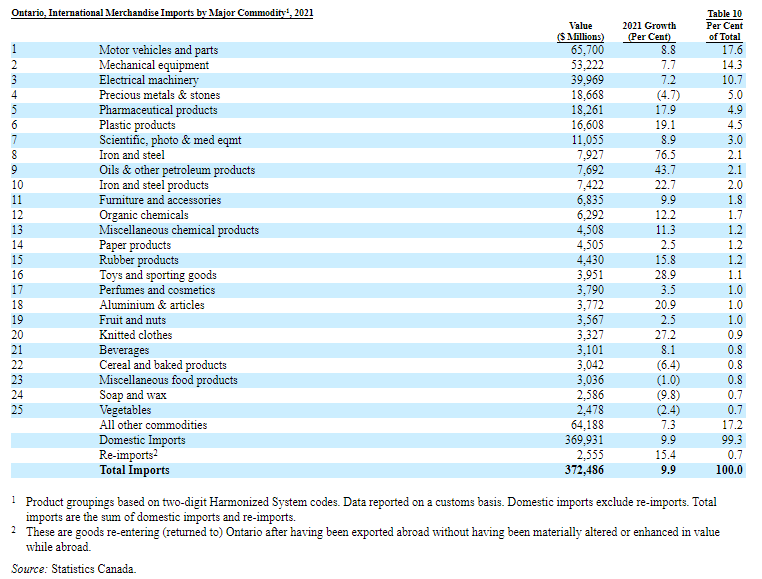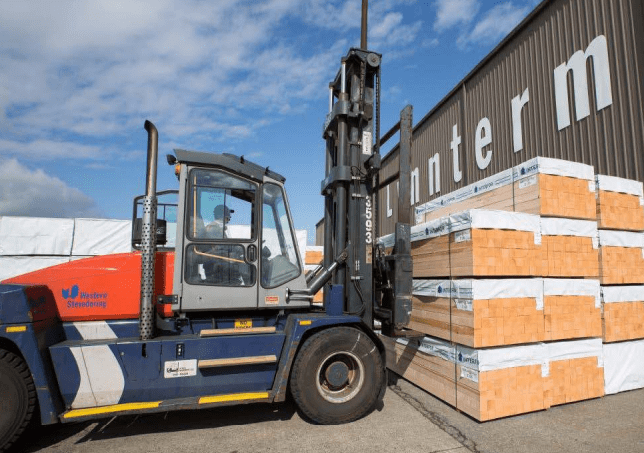Among Ontario, Canada‘s top imports, motor vehicles and auto parts stand out in first place, worth 65.7 billion Canadian dollars in 2021.
Other external purchases of Ontario are, in descending order: mechanical equipment (53.222 million Canadian dollars), electrical machinery (39.969 million), metals and precious stones (18.668 million) and pharmaceutical products (18.261 million).

The province of Ontario has an area of approximately 1,076,395 square kilometers (415,598 square miles), about 10.8% of Canada, and is approximately 11% as large as the United States.
Ontario’s estimated population as of July 1, 2022 was 15.1 million, 38.8% of Canada’s 38.9 million population.
Since 2002, both Ontario’s and Canada’s populations have increased at an average annual rate of 1.1 percent.
Although it makes up only 12% of the province’s land area, southern Ontario is home to approximately 94.5% of its population (as of July 1, 2021).
The population of the Greater Toronto Area, Canada’s most populous metropolitan area, was estimated at 7.1 million on July 1, 2021.
Ontario imports
Canada is a federal state composed of 10 provinces and three territories.
In 1867, the Parliament of the United Kingdom passed the British North America Act, creating the Canadian federation composed, at that time, of the provinces of Ontario, Quebec, Nova Scotia and New Brunswick.
Since then, six other provinces (Manitoba, British Columbia, Prince Edward Island, Saskatchewan, Alberta and Newfoundland and Labrador), along with the Yukon Territory, the Northwest Territories and the territory of Nunavut (which separated from the Northwest Territories on April 1, 1999), have become part of Canada.
Ontario is also a major importer of plastic products; scientific, photographic and medical products; iron and steel; oils and other petroleum products; and steel products.
In response to the invasion of Ukraine, on March 2, 2022, Canada withdrew eligibility for Most Favored Nation (MFN) tariff treatment for virtually all goods originating in Russia and Belarus, resulting in the application of the 35% General Tariff to these imports.
This trade measure is still in place and is accompanied by Canada’s import ban on Russian petroleum products, implemented on March 10, 2022.
To address the exceptional circumstances of the illegal war and its impact on the Ukrainian economy, on June 9, 2022, Canada also implemented a temporary one-year exemption from tariffs and trade remedy duties on imports originating in Ukraine.

